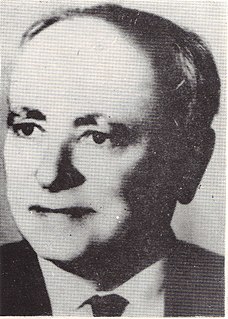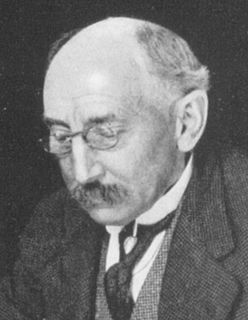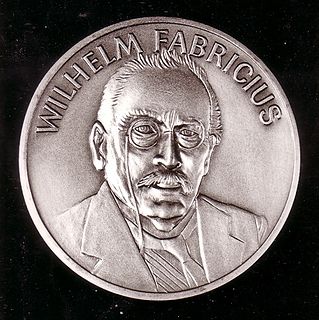Related Research Articles

Sir Douglas Mawson OBE FRS FAA was an Australian geologist, Antarctic explorer, and academic. Along with Roald Amundsen, Robert Falcon Scott, and Sir Ernest Shackleton, he was a key expedition leader during the Heroic Age of Antarctic Exploration.

Andrew John Southcott is an Australian politician and medical practitioner. He was the Liberal member for the House of Representatives seat of Boothby from the 1996 election until he stood down at the 2016 election.

Spider mites are members of the Tetranychidae family, which includes about 1,200 species. They are part of the subclass Acari (mites). Spider mites generally live on the undersides of leaves of plants, where they may spin protective silk webs, and they can cause damage by puncturing the plant cells to feed. Spider mites are known to feed on several hundred species of plants.

Acarology is the study of mites and ticks, the animals in the order Acarina. It is a subfield of arachnology, a subdiscipline of the field of zoology. A zoologist specializing in acarology is called an acarologist. Acarologists may also be parasitologists because many members of Acarina are parasitic. Many acarologists are studying around the world both professionally and as amateurs. The discipline is a developing science and long-awaited research has been provided for it in more recent history.

Chironex fleckeri, commonly known as the Australian box jelly, and nicknamed the sea wasp, is a species of extremely venomous box jellyfish found in coastal waters from northern Australia and New Guinea to Malaysia, the Philippines and Vietnam. It has been described as "the most lethal jellyfish in the world", with at least 64 known deaths in Australia from 1884 to 2021.

Xavier Guillaume Mertz was a Swiss polar explorer, mountaineer, and skier who took part in the Far Eastern Party, a 1912–1913 component of the Australasian Antarctic Expedition, which claimed his life. Mertz Glacier on the George V Coast in East Antarctica is named after him.

Hypervitaminosis A refers to the toxic effects of ingesting too much preformed vitamin A. Symptoms arise as a result of altered bone metabolism and altered metabolism of other fat-soluble vitamins. Hypervitaminosis A is believed to have occurred in early humans, and the problem has persisted throughout human history. Toxicity results from ingesting too much preformed vitamin A from foods, supplements, or prescription medications and can be prevented by ingesting no more than the recommended daily amount.

Sir Joseph Cooke Verco was an Australian physician and conchologist.

Zicman Feider (1903–1979) was a Jewish Romanian acarologist, a remarkable researcher and a gifted academic, whose work continues to influence by many generations of biologists, some of whom studied zoology under his supervision. His name as a researcher is forever associated with the enigmatic group of Acari a.k.a. Acarina, for which he arduously worked to perfect their taxonomy. Alone or in collaboration with his numerous disciples, he described and created 1 phalanx and 2 sub-phalanxes, 16 families and 8 subfamilies, 40 genera, 4 subgenera, and 145 species new to science. One could only compare professor Feider's work with that of Aristide Caradgea, who studied micro-Lepidoptera, attracting all the world researchers of that group to come in a pilgrimage to his modest place in Grumazesti, Neamț, Romania. Similarly, Feider's strenuous line of work encompassed Acari collections from all over Europe, St. Helen Island, North Korea, Nepal, Mongolia, India, Vietnam, Brazil, Venezuela, and Chile, making his lab in the Alexandru Ioan Cuza University, of Iași, Romania, a Mecca of the world's acarologists.

William Joseph Rainbow (1856–1919) was an entomologist and arachnologist whose work includes the first catalogue of Australian spiders.

Trombidium breei is a species of red mite in the genus Trombidium in the family Trombidiidae. It is found in Europe. The larvae are parasites/hosts of certain butterflies (Lepidoptera), particularly meadow brown, gatekeeper, marbled white, common blue and small skipper. They attach themselves to the thorax or legs of the butterfly and transfer from host to host when the butterflies alight to nectar at flowers.

Rhinonyssidae is a family of mites in the order Mesostigmata. There are about 16 genera and at least 460 described species in Rhinonyssidae.

The Far Eastern Party was a sledging component of the 1911–1914 Australasian Antarctic expedition, which investigated the previously unexplored coastal regions of Antarctica west of Cape Adare. Led by Douglas Mawson, the party aimed to explore the area far to the east of their main base in Adélie Land, pushing about 500 miles (800 km) towards Victoria Land. Accompanying Mawson were Belgrave Edward Ninnis, a lieutenant in the Royal Fusiliers, and Swiss ski expert Xavier Mertz; the party used sledge dogs to increase their speed across the ice. Initially they made good progress, crossing two huge glaciers on their route south-east.

Arthur Stanley Hirst also known as Stanley Hirst, was an English arachnologist and myriapodologist on the staff of the British Museum, and was an authority on Arachnida, especially Acari Myriapoda.

Hugo Flecker was an Australian medical practitioner, radiotherapist, toxicologist and natural historian. He founded the North Queensland Naturalist Club in 1932, whose herbarium grew into the now heritage-listed Flecker Botanical Gardens in Cairns, Queensland. He identified the deadly box jellyfish, Chironex fleckeri.
Herbert Womersley (1889–1962) was an entomologist whose works were especially concerned with mites and ticks, silverfish and flies. His research into the diversity of Australian resulted in descriptions of new insect taxa.
Barry John Conn, is an Australian botanist. He was awarded a Ph.D. from Adelaide University in 1982 for work on Prostanthera.
Eutrombicula samboni is a species of mite in the family Trombiculidae, found in South Australia.
Guntheria coorongensis is a species of mite in the family Trombiculidae, found from the tip of Cape York in Queensland to South Australia.

Wolfgang Siegfried Karg (1927-2016) was an East German entomologist who specialised in mites (Acari).
References
- 1 2 3 4 5 6 R.B. Halliday & J.H. Pearn (1999). "Ronald Vernon Southcott Acarologist, Physician, Naturalist". International Journal of Acarology. 25 (2): 151–153. doi: 10.1080/01647959908683627 .
- ↑ R.V. Southcott (1956). "Studies on Australian Cubomedusae, Including a New Genus and Species Apparently Harmful to Man". Australian Journal of Marine and Freshwater Research. 7 (2): 254–280. doi:10.1071/MF9560254.
- ↑ J. Cleland und R. V. Southcott: Hypervitaminosis A in the Antarctic in the Australasian Antarctic Expedition of 1911-1914: a possible explanation of the illness of Mertz and Mawson. In: Med. J. Aust. 1, 1969, S. 1337–1342